
Political Theories for Students
.pdf
C o m m u n i s m
support from Britain, France, and the United States. Under the direction of Leon Trotsky, Lenin’s Red Army won, and by 1921 the civil war had ended.
A massive famine killed 5 million Russians from 1921 to 1922. Lenin’s confiscation of goods had left the peasants without provisions and without the desire to create more. Lenin reevaluated his policies and decided that his people would starve if he didn’t change his confiscation practices. He had hoped that his ideals would be easily put into place, but was finding it harder than he had anticipated.
In 1921, Lenin began his New Economic Policy, a concession to capitalism. It allowed for limited private property and compensation for goods taken from the peasants. Lenin wanted to stimulate production in workshops and farms through profit and efficiency incentives. This policy allowed Russians to support themselves for seven years, through Lenin’s death and the power struggle between Leon Trotsky and Joseph Stalin.
Before Lenin died in 1924, he was concerned about corruption in the party. He had believed the Marxist ideal that, under socialism, there would be no crime or greed because everyone would be provided for. His party leaders, however, had become intoxicated with the power and fear that they held over the people. Communism had begun in earnest. There were frequent abuses of power and Lenin was terrified for the future of his country.
Stalinism When Lenin died, there were two contenders for his position. Leon Trotsky was the head of the Red Army and the favored man for the job. Joseph Stalin was the crafty general secretary for the Communist party, who eventually won the power struggle through his cunning and political backing.
Stalin created a new theory that he called “socialism in one country.” Both Karl Marx and Vladimir Lenin had thought that revolution would be contagious and that the movements in neighboring countries would feed off each other. Stalin saw no evidence of this, however, and felt that the Soviet Union could stand on its own. In order to succeed, he felt that his country needed to substantially improve its technology and industry.
By 1928, Stalin was controlling the government. He decided to alter the economic policy initiated by Lenin and instituted the first of many Five–Year Plans. His goal was to collectivize agriculture and to bring Soviet industry up to speed. The state already had control of the railroads, mines, large factories, and banks. Stalin took control of the smaller factories and peasant farms. He declared a need for communism in or-
der to protect the Soviet Union from its capitalist enemies.
His first Five–Year Plan began in 1929. He ordered heavy industry to grow by 330 percent and general industry to grow by 250 percent. He also collectivized agriculture. Stalin felt that agricultural production would be increased on large, collective farms with machinery. Private ownership went against communist principles and was outlawed. Stalin needed to increase agricultural efficiency so that he could transfer some of the agricultural labor to his industrial labor needs.
Small peasant farms were closed and their land and tools confiscated. Stalin forced his ideas and, when he met opposition, he snuffed it out. Roughly seven million peasants were killed between 1929 and 1933. Many peasants slaughtered their livestock instead of giving their animals to the state. The productivity at the collective farms was poor. The peasants didn’t want to be there. They were paid little and they worked little. Famine swept through the country in the early 1930s. Stalin called it “war by starvation.”
In time, perhaps because Stalin realized that if everyone died there would be no one left to work, the peasants were allowed to farm small personal plots. Though these plots amounted to only three percent of Soviet farmland, they produced one third to one half of the potatoes, vegetables, meat, and eggs. Stalin had expected the collective farms to produce surplus, which he could export in exchange for machinery. Given that there was no surplus of goods, Stalin directed virtually all of the Soviet resources to industrial advances, leaving the collective farms to fend for themselves.
Stalin’s second Five–Year Plan was similar to his first. Though the plans did not achieve the agricultural success that Stalin had projected, they did make remarkable gains in industry. Steel and oil production tripled, with electricity and coal production close behind. The standard of living had plunged, however, for the Soviets that were still alive.
During the second half of the 1930s, Stalin began the Great Purge. Both he and Lenin had conducted purges to eliminate dissent and unrest, but the Great Purge was a much larger murder campaign than anything that had come before it. Millions of citizens were killed or sent to the labor camps where they were worked to death. Stalin eliminated three–quarters of the Communist Party leadership and crippled the economy as the military silenced dissension at every level. The Great Purge ended abruptly in 1938, after at least eight million deaths, and things returned to business as usual.
P o l i t i c a l |
T h e o r i e s |
f o r |
S t u d e n t s |
5 1 |

C o m m u n i s m
When Germany invaded the Soviet Union in 1941, the international community expected a quick Nazi victory. When his troops held their own, Stalin gained international respect for his military prowess. The Red Army defeated Germany, and pushed the Germans across its borders. It kept pushing throughout eastern Europe as well, and while occupying the region, installed puppet communist governments in Poland, Romania, Bulgaria, Czechoslovakia, and Hungary.
Communism spread along with Soviet power. When Stalin died in 1953, the Soviet Union was the world’s second military and industrial power after the United States. Millions of its citizens were either locked in labor camps or living in extreme poverty, but Stalin had created a superpower with the blood of his people.
Reformation in the Soviet Union After Stalin’s death, reform came almost immediately. Attempts were made to increase food and consumer supplies. Party leaders spoke of the need to improve the standard of living, and Nikita Khrushchev, a peasant who had become an important Communist, became the new leader of the Soviet Union. He challenged the ideas of both Lenin and Stalin and tried to set his country on a new path.
On February 25, 1956, Khrushchev denounced Stalin and his methods in a secret speech which lasted four–and–a–half hours. His speech triggered mayhem. His “Destalinization” was designed to remove Stalin’s ideology from the previous communist theorists.
Khrushchev declared that, despite marxist claims, capitalism and communism could coexist. He argued that war was not necessary to choose a winner, but that the system better able to provide for its citizens would prevail. He felt that communism would be that system and, after 1956, spent much of his time trying to increase the standard of living so that communism would be the victor. His housing program was more successful than his farming program, but overall he won support. He reduced censorship and increased freedom. He insisted on communism, however, and power remained in the Communist Party exclusively.
Khrushchev also tried to improve foreign relations. He wanted to end the Cold War, the period of time after the World War II when the United States and the Soviet Union were relentlessly competing to outdo the other militarily. In 1962, however, the two countries almost went to war. The Soviets tried to put missiles in Cuba to aim at the United States. The United States threatened war, and Khrushchev backed down. His countrymen were furious at this embar-
rassment and he never fully recovered. The Communist Party leadership removed him from power and he was voted out of office by its Politburo in 1964.
Khrushchev was replaced by Leonid Brezhnev (1906–1982), one of the men who had unseated him. Brezhnev led the Soviet Union for 18 years until his death in 1982. He reversed Khrushchev’s economic decentralization program and tried to reinstate Stalin’s reputation. He continued to try to curb tensions with the United States and signed a nuclear arms control treaty in 1972.
Regression Many Soviets wanted a return to Khrushchev’s reforms, calling for increased freedom and reduced state control. They began to resent communism, and a few Soviets openly criticized the limited freedom. Andrei Sakharov (1921–1989), the leading Russian nuclear scientist at the time, wrote a letter to the Soviet government in 1968. He argued that freedom was imperative and that, without it, the Soviet Union would cripple itself. He was put under house arrest and sent into exile. Not until Gorbachev’s glasnost policies in 1986 was Sakharov allowed to return to Moscow.
Also in 1968, the government issued the Brezhnev Doctrine, which stated that the Soviet Union would forcefully stop any of its satellite countries from turning to capitalism. The Doctrine claimed that socialism was irreversible—but the vow to forcefully stop any capitalist uprising seemed to be a contradiction of the Marxist doctrine of inevitable and everlasting communist revolution. Protests broke out, particularly among the minorities.
The Soviet economy was flagging and military spending usurped money that could have been used elsewhere. During the Khrushchev era, appliances common in the American home were almost nonexistent in the Soviet Union, particularly because these goods were not only rarely produced, but also almost never imported. It wasn’t until the late 1960s and early 1970s that an effort was made to produce great quantities of refrigerators, washing machines, and televisions. And yet, even when these things became common in the Soviet home, it took forever to get them repaired. Moreover, the United States and other Western countries were almost half a century into the transportation age before a car on the streets of Moscow became something other than a rarity.
Everyday services Americans took for granted were woefully poor in Soviet Russia in the 1960s. Since the government controlled the economy, there was no supply and demand. Thus, there was no incentive for people to provide quality service. Today’s
5 2 |
P o l i t i c a l |
T h e o r i e s |
f o r |
S t u d e n t s |
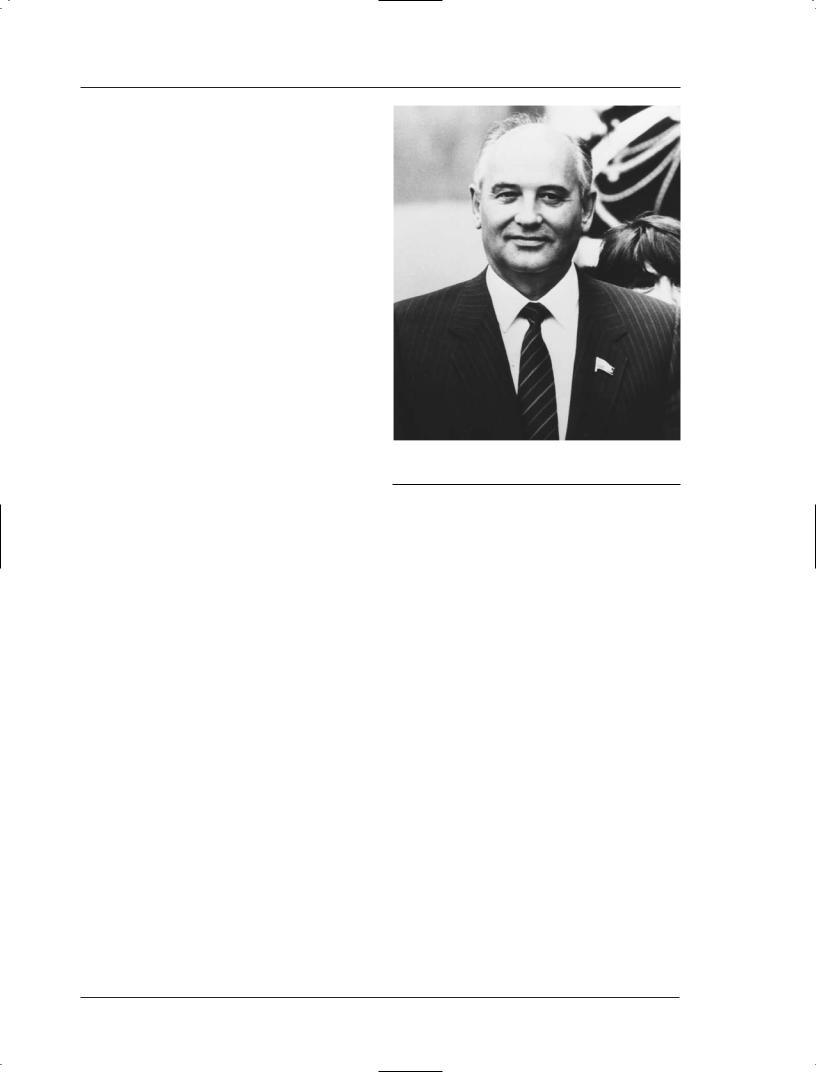
C o m m u n i s m
Isms illustrates the typical frustration of a Soviet consumer: The Soviet shopper had to stand in line three times to buy something—in one line to see if an item was available, in a second line to pay, and in a third to exchange a receipt for the item. “A few supermarkets and self–service stores opened during the late 1960s, and more appeared during the 1970s,” note the authors, “but these made little dent in traditional Soviet methods of retailing.”
As frustrations mounted for Soviet citizens, bartering and bribery went on behind closed doors—in- deed, sometimes the authorities knew but looked the other way. Quality items smuggled in from the West sold at outrageous prices. Domestic prices were kept low by the government, but the ordinary citizen didn’t have very much money anyway and there wasn’t always a huge selection of things to buy. Furthermore, union workers couldn’t address grievances because unions were expected to follow communist policy. The conditions of Soviet workers, in terms of worker’s rights and fringe benefits, were only a step or two above the conditions of workers in capitalist countries before the Industrial Revolution. Government housing favored intellectuals and government officials before the ordinary citizen. It wasn’t until the early 1970s that the Soviet government came out in favor of private home ownership. During this time, alcoholism grew as a means to escape prolonged misery.
When Brezhnev died in 1982, his country was struggling to keep itself alive. Millions of Soviets had ceased to believe in communism and felt its corruption rather than its ultimate goals of equality. Brezhnev was then replaced by Yuri Andropov (1914–1984) who died after fifteen months in office. Andropov was followed by Konstantin Chernenko (1911–1985) who tried to keep the country afloat. Chernenko died in 1985 after a year in office and Mikhail Gorbachev (1931–) stepped onto the Soviet stage.
Collapse of the Soviet Union Gorbachev believed in Marx’s and Lenin’s ideas. He felt that his country needed reform but was not past the point of no return. He called for restructuring (perestroika), openness (glasnost), democratization (demokratizatsia), and new thinking (novoye myshlenie). Gorbachev met strong Communist Party opposition to his ideas of reform, but he decided to continue in spite of it.
In 1987, Gorbachev announced a list of changes. His reforms allowed citizens to establish private businesses. He lessened state power over factories and even began converting some of the military factories into civilian factories. In 1989, he allowed farmers to rent land for private business. Censorship dissipated
Mikhail Gorbachev. (Archive Photos, Inc.)
and Soviets gained access to banned books and films. They learned the lies that the government had used to mislead them and saw themselves from a different perspective.
Also in 1987, Gorbachev signed an arms control agreement with U.S. President Ronald Reagan (1911–) The agreement eliminated medium–range nuclear missiles from Europe and did wonders for relations between the two countries. Gorbachev publicized his intent to cooperate with the West. He removed Soviet troops from Afghanistan to deflate increasing anti–communist activism.
In 1989 the first Russian elections since 1917 were held, and non–communists replaced communists all over the country. The Congress of People’s Deputies became the new governing body. Boris Yeltsin was elected to the Congress after having lost his job for criticizing Gorbachev. The mood in the Soviet Union grew more restless—there were strikes, and calls for independence from republics such as Armenia, Azerbaijan, and Georgia. Gorbachev remained in power, but was coming under heavier and heavier fire, particularly in the Congress.
Things were even worse in other areas of society. The communist economy imploded before a capitalist economy could replace it. Shortages plagued the country and prices flew upward for the items in the free market. Food rationing began and workers went
P o l i t i c a l |
T h e o r i e s |
f o r |
S t u d e n t s |
5 3 |
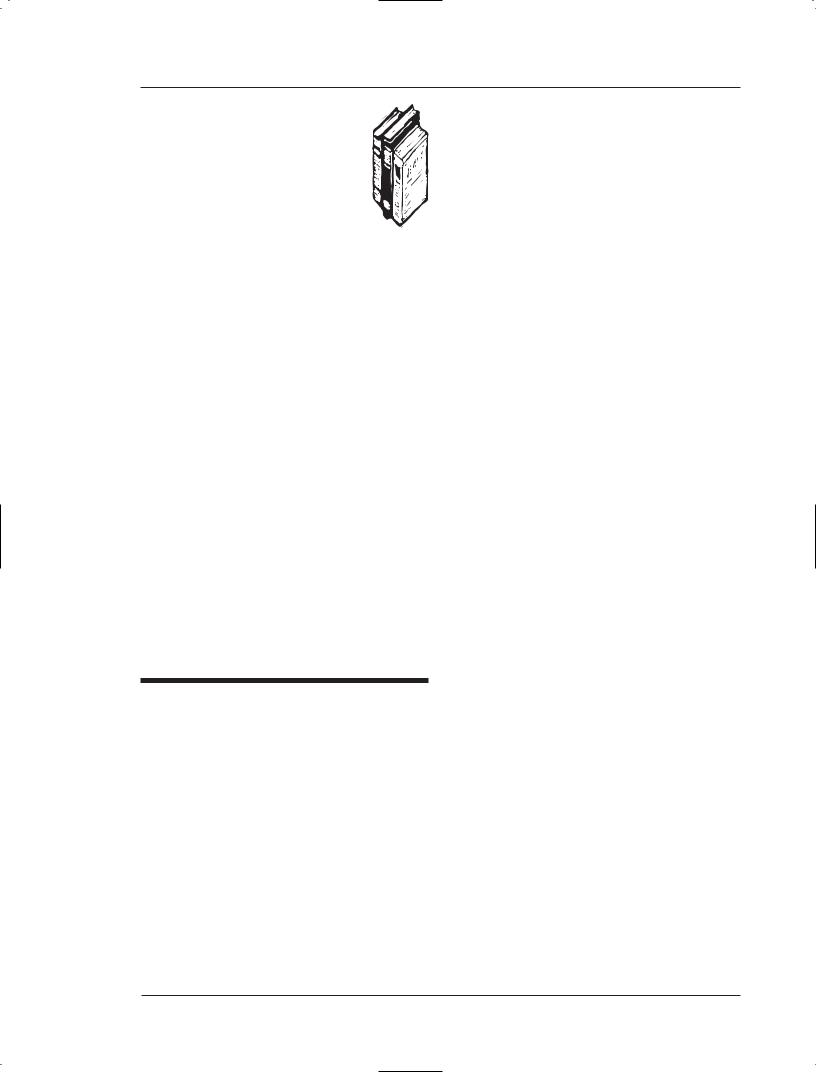
C o m m u n i s m
MAJOR WRITINGS:
Animal Farm
Animal Farm was written as a parody of the communist revolution in Russia. Written by George Orwell and published in August 1945, this work illustrates some of the potential problems of communist theory. The story follows the political actions of the animals on the Jones’ Farm.
At the beginning of the story, the animals begin to notice injustice between the humans and the animals at the farm. Led by a group of pigs, the animals rebel and set up their own farm based on equality. This revolution parallels the Bolshevik revolution in Russia. As with Russia, the communist dream begins to breakdown. One of the pigs gains power through propaganda spread by another pig, much as communist propaganda was spread in Russia through the Russian paper Pravda.
The pigs gain control of the farm and the other animals find themselves working just as hard as they did for the humans. The corrupt leaders sleep in the house, justifying their superiority by claiming that, “All animals are equal, but some are more equal than others.” Animal Farm, though not intended to attack the concept of communism, paints a dismal picture of how communism can breed corruption as successfully as any other system.
power. Yugoslavia’s communism ended with its civil war in 1991, and the government of Albania disintegrated the same year. Gorbachev did not try to stop communism from crumbling. Reformers were still furious with the limitations of his reforms, and conservative communists were equally irate with the changes he had made.
On August 18, 1991, a group of conservative communists tried to return to the former version of communism. They took control of the government and put Gorbachev under house arrest. Though the coup failed, hundreds of thousands of Russians took to the streets in protest. Boris Yeltsin, who had been elected as the president of the Russian republic two months prior, led the resistance.
After three days of mayhem, Gorbachev was back in Moscow as the president of the Soviet Union. He didn’t last long, however, and the remaining shards of communism were swept away. Communist party officials were forced out of office and their documents were confiscated. Statues of communist leaders were knocked down and towns and streets were renamed. Gorbachev resigned his post and allowed Boris Yeltsin to take his place.
As communism ended in the Soviet Union, the country itself collapsed. Latvia, Lithuania, and Estonia had been trying to secede since the late 1980s. The Soviet government gave them independence. In December, Boris Yeltsin met with the leaders from Ukraine and Belarus and created the Commonwealth of Independent States, a lax union of states independent from one another. Communism had died, and had taken the former Soviet Union along with it.
on strike. Russians began to organize non–communist parties and non–Russians, who made up almost half of the Soviet population, grew weary of their poverty.
Gorbachev’s popularity took a nose dive. Conservative communists criticized his reforms, and reformers, including Boris Yeltsin, who had left the Communist party in 1990, argued that his changes were too gradual. Communism began to crumble in many of the Eastern European satellite countries as well. On November 9, 1989, the Berlin Wall came down in Germany. The following day, the Bulgarian communist government fell. Czechoslovakia installed its first non–communist government since 1948, and other countries followed suit.
The Soviet bloc collapsed, leaving only Yugoslavia and Albania to represent its communist
China
The Rise of Mao Tse–tung Communism crept into China after World War I. The successful Bolshevik revolution in the Soviet Union and the government that followed gave hope to a similar creation in China. Also, China had supported the Allies in World War I. The Chinese expected the German occupied zones of China to be returned to them, but the Western powers allowed Japan to gain control of them. The Chinese were furious and they lost faith in the Western powers and in their democracies.
The Chinese Communist Party (CCP) was founded in 1921, with Soviet help. The party leadership was shared between Chen Duxiu (1879–1942) and Li Dazhao (1889–1927). The CCP took direction from Moscow. Moscow ordered the CCP to fuse with the Guomindang, the nationalist party, to form a “united front” that would unify China and effectively drive the Western powers
5 4 |
P o l i t i c a l |
T h e o r i e s |
f o r |
S t u d e n t s |
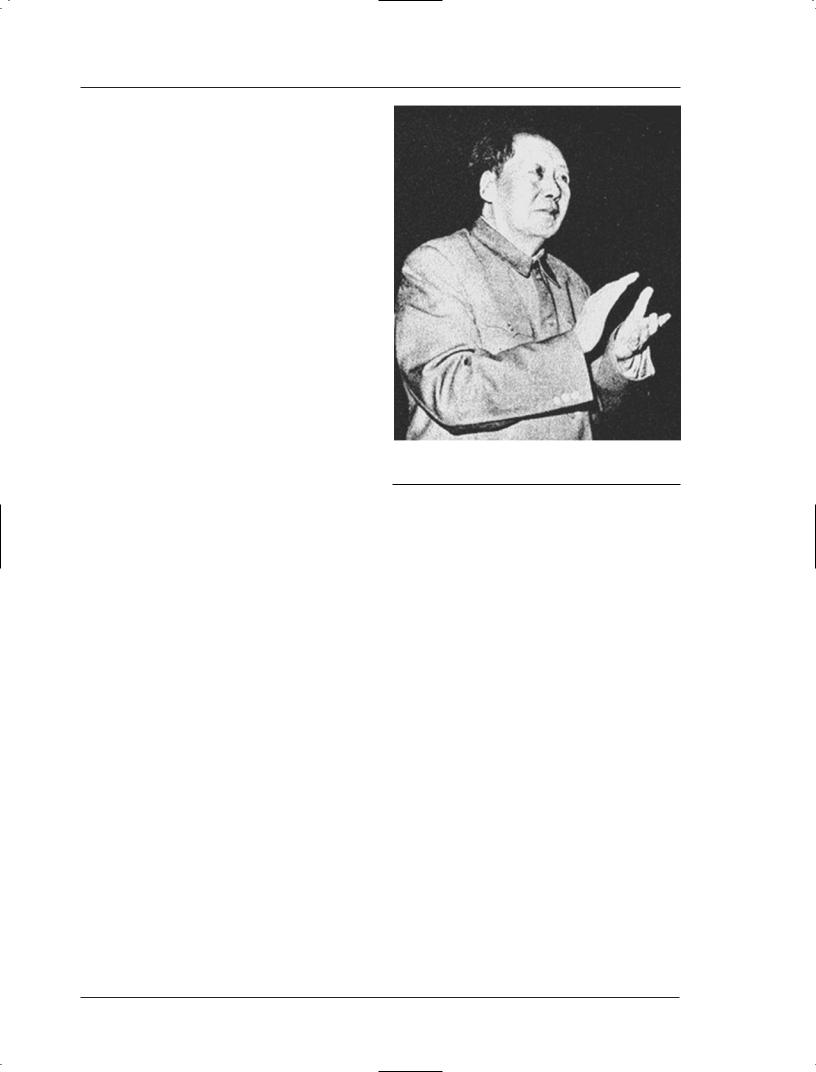
C o m m u n i s m
out of Asia. In 1927, however, the leader of the Guomindang turned against the CCP and murdered thousands of its members. The alliance ended, and the communists who survived fled to the countryside to restructure. Mao Tse–tung was among them.
Mao Tse–tung (1893–1976) was the son of a peasant farmer who went against family wishes and attended primary school. He became interested in revolutionary literature and became a Marxist in 1921. He was a founder of the CCP and, after its victimization in 1927, decided that his party would never again be unable to defend itself. He felt that Chinese revolution would need to be based upon the peasantry rather than the proletariat, as Western Marxists argued.
The CCP party leaders did not agree with Mao’s ideas, and continued to take their direction from Moscow. Mao and his supporters were out of reach on their mountain base, however, and did as they pleased. In order to win the support of the peasantry, Mao and his followers treated them with respect. By 1931, Mao had amassed enough support to declare the independent state of the Chinese Soviet Republic. It was an island in the middle of the Republic of China, run by the Guomindang government led by Chiang Kaishek (1887–1975). Mao controlled his republic however, seizing properties from landlords and giving the reigns to the peasants.
Chiang Kaishek tried to crush Mao’s regime. He succeeded in 1934 and the communists fled China in what was to be known as the Long March. In a year, they walked over 6,000 miles. One hundred thousand began the march, but only 10,000 finished. When they ended the march in northeastern China, Mao became the party leader and built his new headquarters.
In 1937, Japan invaded the Chinese region of Manchuria. The war crippled the Guomindang forces. Chiang Kaishek was forced to sign a second agreement with the CCP in order to drive the Japanese out. During World War II, Mao developed the “Yanan Way,” named after his party’s base town. The Yanan Way comprised several ideas. The first was the “mass line,” meaning that the peasants were not second class. The party leaders needed to live and learn with the peasants in order to make decisions in their best interest while leading them toward socialism. The Yanan Way included a system of rigid control over the troops, as well as intense training. Nationalism was important as well.
By 1943, Mao was the chairman of the party. Communists were studying his writings and he was called the “Great Savior of the People.” When the Japanese were finally defeated in 1945, Mao and CCP had increased their stronghold to 90 million people
Mao Tse–tung.
and hundreds of thousands of square miles. The CCP was much more popular than the Guomindang, and by 1949, the CCP controlled the whole of mainland China. The Guomindang fled to Taiwan where it had American support. Mao was named the chairman of the People’s Republic of China.
Life Under The CCP Initially, Mao followed Stalin’s example, but within two years began to deviate from the Russian model. In 1953, Mao instituted his first Five–Year Plan. His plan included the collectivization of agriculture, though different from that of the Soviet attempt. Peasants were asked to join collectives voluntarily. Those who did not join voluntarily were persuaded with threats of violence and execution.
Within four years, 90 percent of the country’s peasants were working on collective farms. The CCP began to divide, however, and when peasants had to give up their land, they resisted. Organizational problems spawned from lack of experience, and Liu Shaoqi led a movement to slow down the collectivization. Mao was bitterly opposed. Eventually, Mao continued at his pace but with some concessions, such as peasants being permitted to keep their own animals and personal farming plots.
The Five–Year Plan included industrial growth as well. Steel, electricity, and coal grew quickly,
P o l i t i c a l |
T h e o r i e s |
f o r |
S t u d e n t s |
5 5 |
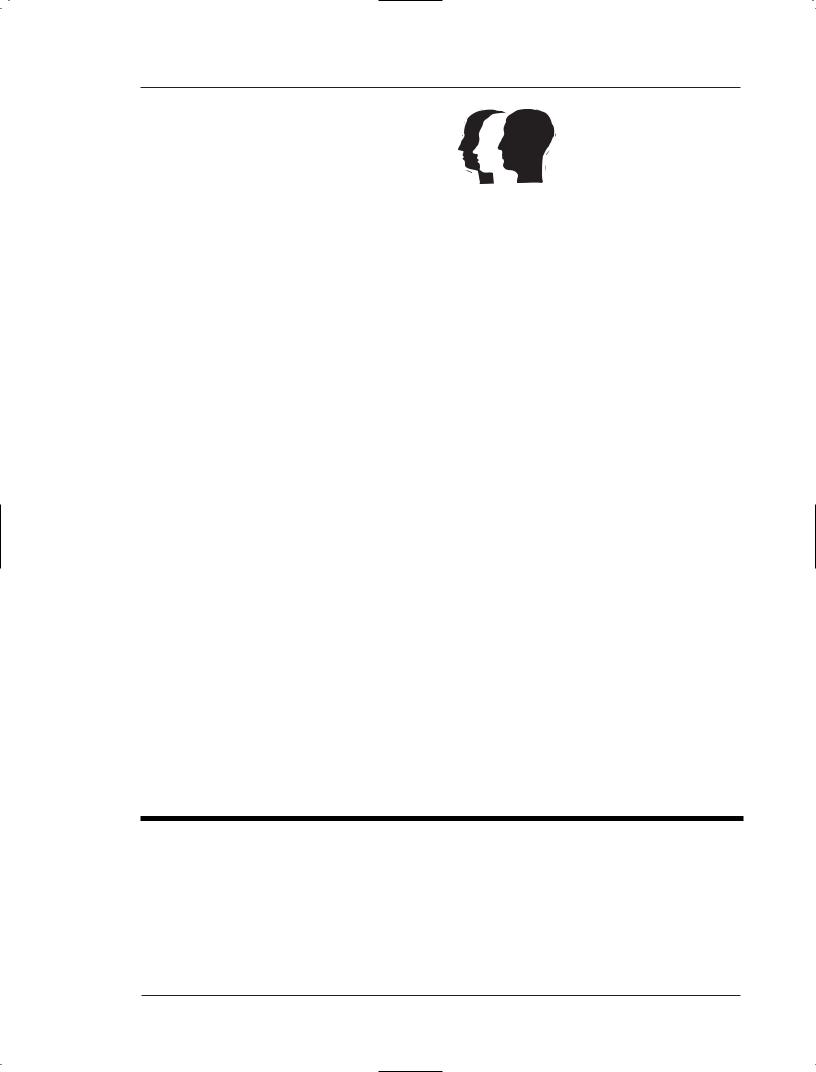
C o m m u n i s m
BIOGRAPHY:
Mao Tse–tung
Mao Tse–tung was born on December 26, 1893 in Shao–Shan, a town in the Hunan province in China. He led a guerrilla war that brought Communism to power in China.
Mao was the son of a peasant who had been successful as a farmer dealing grain. His family felt that education was only necessary to teach bookkeeping. He went to school in his village and learned a general knowledge of Classic Confucius. When he was thirteen he left school and began to work on his family’s farm. In a rebellious move, young Mao then left his family to attend the primary school in a nearby county, and went on to study at the secondary school in his provincial capital. It was there that he learned of Western ideas. While he was in school, revolution broke out in Wu–chang against the Manchu dynasty and spread quickly to his area.
Mao enlisted in the revolutionary army was a soldier for the next six months. A new Chinese Republic was born that spring, and his military service was over. He drifted through schools for a year, experimenting with law school, police school, and a business school. He studied history and read liberal tradition classics.
In 1918, Mao graduated from the Firs Provincial Normal School in Ch’ang–sha. He went to Peking University and worked as an assistant in the library. He was still at the university during the May Fourth Movement in 1919, which was student protests against giving former German holdings in the Shantung Province to Japan rather than returning them to China. The Chinese radicals turned to Marxism and founded the Chinese Socialist Party in 1921.
In 1920, Mao became the principal of the Lin Ch’ang–sha primary school and he organized a Socialist Youth League branch there. He married Yang
K’ai–hui, the daughter of his ethics teacher. In 1921 he attended the First Congress of the Chinese Socialist Party. Two years later when the party joined Kuomintang, the Nationalist Party, Mao was one of the first people to work for the Kuomintang. He, his wife, and their two sons moved to Shanghai.
Mao began to appreciate the revolutionary potential of the peasant class. He began to try to concentrate the peasant dissatisfaction into revolutionary vigor. After having fled his home from the governor of Hunan, Mao went to Canton and became the head of the Kuomintang’s propaganda bureau. When he returned home, he falsely predicted an imminent peasant uprising.
In 1930, the Central Committee ordered the Red Army to occupy major cities, but Mao felt that this would only cause losses to the Red Army and disobeyed orders. His wife was murdered by the Kuomintang and he married Ho Tzu–chen, the woman he’d been living with since 1928.
The Chinese Soviet Republic was founded in November 1931 in a section of the Kiangsi Province. Mao was the chairman. The best hope of victory throughout the country seemed to be to start with a stronghold and to expand outward. Mao led the Red Army on the Long March in October 1934. His army arrived in Shensi Province in the following year. China became involved in a war with Japan, and Mao took the opportunity to expand his army.
From 1936 to 1940, Mao spent much of his time writing. He wrote Strategic Problems of China’s Revolutionary War,, On Protracted War, and On the New Stage. By the winter of 1939–1940, Mao could adopt a stronger strategy. He became the socialist leader. He also divorced his second wife and married an actress, Lan P’ing.
contrasting with the slow growth in agriculture, similar to the Soviets’ example. The population grew faster than the grain production. In order to combat some of the problems, Mao created the Great Leap Forward. He tried to tap into the revolutionary excitement of the populace to create a stronger work ethic.
Communes replaced collectives. The average commune farmed 100,000 acres with 25,000 workers.
In order to promote equality, people were paid the same wage regardless of the work they did, and the peasants were asked to build factories on their communes so that they could work on industry after hours. Mao promised “hard work for three years, happiness for a thousand.” The Great Leap Forward was a dramatic failure. China lost Stalin’s economic aid. The commune factories produced worthless steel, equal
5 6 |
P o l i t i c a l |
T h e o r i e s |
f o r |
S t u d e n t s |

C o m m u n i s m
wages created apathy, and China’s economy lurched downward. As
Mao continued as the party chairman but lost his post as the president. He was replaced by Liu Shaoqi who reversed many of the changes made by the Great Leap Forward. The communes were divided into “production teams” similar to collective farms. Peasants were once again allowed to farm small personal plots and within three years, China’s economy had righted itself. The road to recovery was paved with famine, however, and more than 20 million people died along the way.
The Reds The CCP split into the Reds and the Experts. Mao’s Reds subscribed to socialist ideals and communal living. Liu’s Experts argued that personal farming plots did not undermine socialism but, in fact, created successful workers.
When Joseph Stalin died in 1953, the gap between the Soviet Union and China began to grow. Mao had been unwilling to succumb to Soviet control, and China continued to create its own version of communism instead of following the Soviet model. Mao opposed Stalin’s successor, Khrushchev, and disliked his methods and ideas. Mao felt that Khrushchev was infected with capitalism and wanted nothing to do with him. In 1960, Khrushchev withdrew all aid from China. In 1962, Mao criticized Khrushchev for recalling his missiles from Cuba during the Cuban Missile Crisis. Antagonism between the two continued unabated.
In 1966, Mao launched the Cultural Revolution and restored himself to power. Mao felt that Liu had been corrupted by capitalism, and he created the Red Guards, an organization of teenagers who had done poorly in school and welcomed an opportunity to act out their frustrations. His Red Guards grew to 11 million youths. Under Mao’s direction, the Red Guards attacked everything that was foreign, including Western art, books, and intellectuals infested with foreign ideas.
Plays, ballets, and operas were banned. China was enveloped by chaos. Hundreds of thousands of Chinese were killed. Though he withdrew from the public eye in 1969, Mao remained in control until his death in 1976. After a failed attempt to gain control by the “Gang of Four,” Communist radicals, he was succeeded by Deng Xiaoping (1904–1997), a supporter of Liu’s Experts.
Beginnings of Communist Decline Deng began to unravel the sweater of communism. He instituted “The Four Modernizations,” allowing competition, incen-
tives, farming independence, and management autonomy. Deng allowed economic freedoms based on capitalist ideals, but still cracked down on basic rights such as freedom of speech. Nonetheless, the Chinese economy improved as private enterprise was introduced. Moreover, Deng’s policies sought foreign investment and the creation of a thriving tourist industry. Western styles and customs began to appear in the youth culture.
A push for democratic reforms increased in strength during the 1980s. By the end of the decade, things had reached their breaking point. In May 1989, during a summit meeting between Deng and Soviet Premier Mikhail Gorbachev, student protesters were such a vocal presence that the long–awaited summit turned into an embarrassment.
When the summit ended, thousands of students and other citizens congregated in Beijing’s Tiananmen Square to protest corruption and call for reforms. After officials failed to convince the students to disperse, Deng declared martial law. The government pulled the plug on foreign broadcasts of the demonstration; many observers felt China was on the brink of civil war. Then, on June 3, 1989 the military was brought in to clear the students from the Square. Hundreds died as tanks rolled through the streets and bullets. The uprising was supressed, but China’s reputation in the international community suffered.
China has been trying to rebuild its reputation following Tiananmen Square. In the years preceding and following Deng’s death in 1997, Chinese leaders have been committed to opening up the country’s economy, even at the expense of introducing more capitalist aspects. Communism has started to decompose in modern day China. Deng’s legacy is that of a leader who was draconian in the area of human rights, but also of one who did a great deal to raise the standard of living and bring the Chinese economy into the modern world.
Today China more closely resembles the West in terms of the bustling street–side shops, lifestyles of teenagers, and relative economic freedom than any communist country in history. But the government has learned that their concessions to economic freedom have come with a price: the citizens begin to want other freedoms, too. However, it must be made clear that, although capitalist reforms have been introduced and have improved the economy, China is still a communist country.
Cuba
Fidel Castro (c. 1926–) brought communism to Cuba. In the fall of 1958, Castro led a revolt against
P o l i t i c a l |
T h e o r i e s |
f o r |
S t u d e n t s |
5 7 |
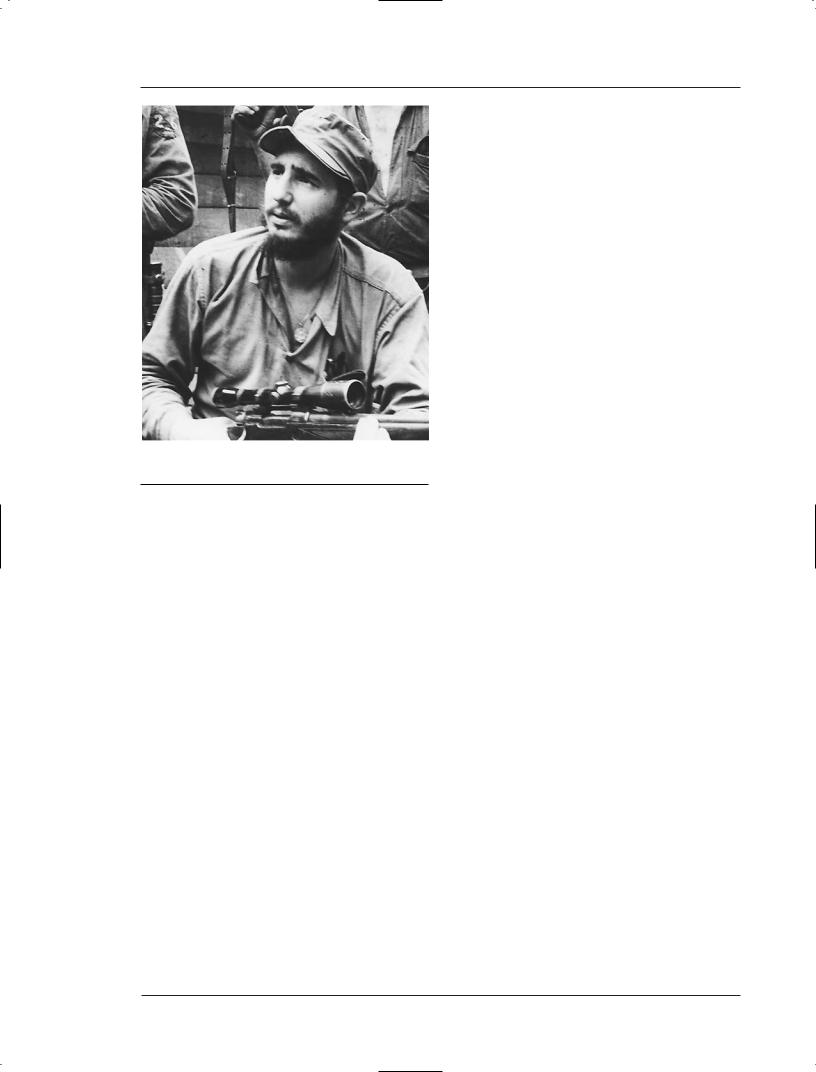
C o m m u n i s m
Fidel Castro. (The Library of Congress)
the government of Fulgencia Batista. Batista fled the country at the beginning of 1959 and, within a week, Castro and his Fidelistas were in control of the capital, Havana. Initially, many Cubans were happy with the revolt. They had been frustrated with the corruption of Batista’s government and looked to Castro to wipe the slate clean. However, it soon became clear that Castro intended to bring communism to Cuba.
Regime of a Dictator Castro became the head of the armed forces and, within months, the president. Castro had gained support through his promises of a restored constitution, civil liberties, and honesty. Once in power he was more radical, however. Castro created a dictatorial one–party government. He instituted a centrally planned economy, nationalizing Cuba’s commerce and industry. He organized collective farms and cooperatives to produce sugar cane, confiscating land owned by foreigners to do this. The international community and the Americans in particular were outraged by Castro’s land confiscation. Under Castro, only Cubans were permitted to own land, and they were restricted in how much they could have. At the same time, Castro expanded social services to all Cubans regardless of stature. Employment was guaranteed and education and health care were made available to everyone. Cuba’s economy struggled, however, and Castro was an unsuccessful economic
manager. Cuba depended on the Soviet Union for many of its necessities.
In May of 1959, Castro’s government signed the Agrarian Reform Bill. The bill was designed to change the ownership of the agricultural land. Less than 10 percent of the Cuban landowners owned over 70 percent of the land. The bill set a 1000–acre limit of ownership. Another Agrarian Reform Bill in 1963 changed the guidelines to allow for only 167 acres per landowner. Roughly 100,000 Cubans were given 67–acre plots to farm. Most of the land confiscated from the foreigners was turned into collective farms. Communism had begun in earnest.
In 1960, the First Deputy Premier of the Soviet Union, Anastas Mikoyan, visited Cuba. He gave Cuba a loan of 100 million dollars and pledged that the Soviets would purchase 5 million tons of sugar. China offered trade and loans, followed by the Soviet satellite countries.
Cubans who did not support the new regime were killed or imprisoned. Thousands of dissenters went underground or fled Cuba, often to the United States. Castro denounced the United States and accused the country of planning to invade Cuba. American citizens lost enormous investments that they had made in Cuba. Castro confiscated property and though he promised to compensate those he took from, he often did not.
Reactions to Castro For two years, other Western governments tried to establish friendly relations with Cuba. At the beginning of 1961, the president of the United States, Dwight D. Eisenhower (1890–1969), ended the camaraderie. Castro accused Havana’s United States Embassy of plotting activities against his revolution. Eisenhower ended diplomatic relations and implemented a complete export embargo. He canceled sugar importation and closed the door to Cuba. Other countries followed suit. Except for Mexico, the other Latin American countries cut their ties with Cuba. In a 1962 conference of the Organization of American States, Cuba was voted out of the organization.
The United States, working with Cuban refugees who wished to overthrow Castro’s regime, planned an invasion of the island nation. The Central Intelligence Agency launched an attack of 1500 Cuban refugees on April 17, 1961. They landed at the Bay of Pigs, 90 miles from Havana. Over 1000 of them were imprisoned and their attempted coup was a failure.
In 1962, United States president John F. Kennedy (1917–1963) imposed an embargo on virtually all
5 8 |
P o l i t i c a l |
T h e o r i e s |
f o r |
S t u d e n t s |
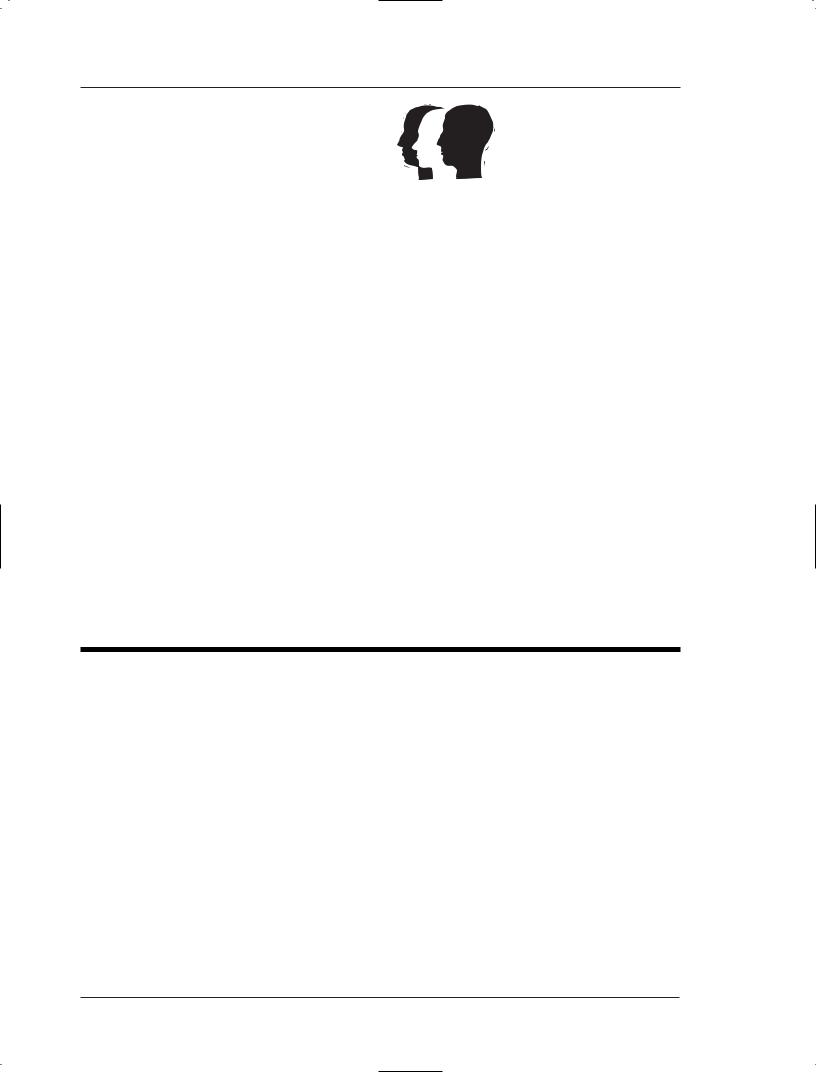
C o m m u n i s m
BIOGRAPHY:
Fidel Castro
Fidel Castro was born on August 13, 1926 or 1927 near Biran, Cuba. He created the first communist regime in the Western hemisphere and has become infamous in the political world.
Castro was born on the easternmost side of Cuba. His father was a Spanish immigrant and a successful sugarcane farmer. His father had two children with his first wife, and five children, including Castro, with his cook, Lina Ruz Gonzalez. Castro’s brother, another son of the cook, became Castro’s chief associate.
Castro went to a Roman Catholic boarding school in Santiago de Cuba, and then to Catholic high school in Havana. He was an excellent athlete. In 1945, Castro began to study at the University of Havana in the School of Law. He was very active politically and, in 1947, joined a failed attempt to invade the Dominican Republic to oust Generalissimo Rafael Trujillo. He participated in riots in Bogota, Columbia the following year.
He graduated in 1950 and began to practice law. He joined the reformist Cuban People’s Party and became their candidate for the House of Representatives seat in 1952. Before the elections could take place, however, General Fulgencio Batista, the former president of Cuba, overthrew the leadership and cancelled the elections.
Unable to unseat Batista through legal channels, Castro organized a rebel force. On July 26, 1953, he led roughly 160 men on a kamikaze mission on the Moncada military barracks in an attempt to ignite an uprising. Most of the men died, and Castro was arrested. He was sentenced to fifteen years in prison but was released with his brother Raul two years later. The two men went to Mexico to continue their fight against Batista. Castro created a revolutionary group of exiles called the 26th of July Movement.
On December 2, 1956, Castro led 81 armed men to Oriente, Cuba. All but 11 of the men died, but Castro and his brother survived. Revolutionary sentiment grew in Cuba and, after a series of victories, Castro triumphed over Batista’s forces and Batista fled the country. Castro’s 800–man guerrilla army had beaten Batista’s 30,000–man force.
Castro’s daughter came to the United States in 1993 and publicly denounced her father’s oppressive policies. The largest anti–Castro demonstration in 35 years followed her remarks and Castro lifted his restrictions on Cubans wishing to leave the country. In 1988, Castro allowed the Pope to visit Cuba for the first time. Castro continues to cling to Cuba’s political power, and the United States to its anti–Cuban policies.
trade with Cuba. The Soviet Union signed a massive 700 million dollar trade arrangement with Castro, however, the Cuban economy was decaying. The industrial plants that Castro confiscated had broken down for lack of materials to keep them running. Agriculture waned and there was a food shortage. In March 1962, Castro began to ration food.
The Soviet Union began to ship military goods to Cuba, claiming that the goods were only for Cuba’s defense. The Soviet Union also said that it was sending only technicians to Cuba, not military personnel. In October 1962, tensions between the United States and Cuba came to a head as the Cuban Missile Crisis unfolded. U.S. intelligence began to suspect that the Soviet Union was bringing missiles to Cuba to aim at the United States. Photographs from spy planes confirmed the presence of missile silos being constructed in Cuba. President Kennedy felt a threat to his coun-
try and called for a “quarantine” on the Soviet ships carrying the missiles and military cargo to Cuba. He stated that a Cuban attack anywhere in the West would be interpreted as a Soviet attack on the United States and that he would retaliate with nuclear weapons.
The United States was ready for war. The United States Navy hovered in the Caribbean until the Soviet ships turned away with their cargo. Nikita Khrushchev, the Soviet Premier, sent a letter to Kennedy offering to remove the missiles in exchange for Kennedy’s assurance that he would not invade Cuba. Kennedy agreed, the missiles were withdrawn, and the crisis settled.
Conditions between the United States and Cuba improved slightly. At the end of 1962, Castro offered to trade the prisoners he had taken at the Bay of Pigs for over 50 million dollars worth of food and drugs. In 1965, Castro allowed Cubans with American
P o l i t i c a l |
T h e o r i e s |
f o r |
S t u d e n t s |
5 9 |

C o m m u n i s m
relatives to migrate to the United States. Many Cubans left the country in what became known as the “Freedom Flights.” Over 300,000 Cubans came to the United States between 1965 and 1973.
Soviet support for Cuba continued at roughly one million dollars per day. Cuba’s industrialization went poorly, and Castro continued to focus on agriculture.
Relations between the Soviet Union and Cuba began to sour in the later 1960s. After Joseph Stalin’s death in 1953, the Soviet leadership had become more moderate and democratic. Castro continued his dictatorship, however, despite Soviet displeasure. In 1968, several Cubans in the Communist Party were arrested for siding with the Soviets. Relations improved for part of the 1970s, and the Cubans supported the Russians in the Angolan civil war in 1975 and 1976.
In 1976, Cuba instituted its first socialist constitution. A National Assembly of the People’s Power was led by the Council of States and the position of Premier was annulled. Castro was elected to be the president of the Council of States in 1976. In 1977, relations between Cuba and the United States continued to improve. The countries signed agreements on fishing rights and boundaries.
In 1980, almost 10,000 Cubans sought asylum in the embassies of Havana. When Castro loosened his emigration restrictions and opened the port of Mariel, 125,000 Cubans scrambled to the United States. The Americans tried to send them back, but Castro resisted. In December 1984, an immigration policy was developed between the two countries and the Cuban exiles were deported back to Cuba.
Later that year, Cuba suspended the immigration agreement after the United States began broadcasting radio programs to Cuba. When Soviet premier Mikhail Gorbachev began to reform the Soviet Union, Castro refused to change his policies to meet those of the new Soviet leader. In 1989, Gorbachev visited Castro and outlined cutbacks in Soviet aid. The Soviets had been giving five billion dollars annually and needed the money for their domestic struggle. When the Soviet Union dissolved in 1990, the aid stopped completely. Castro was left without his largest supporter and trading partner. Shortages grew worse in Cuba and rationing became tighter. The Cuban economy flagged and Castro was forced to relax his economic policies to allow capitalistic ventures. However, he kept his tight grip on politics. Castro continues to enforce communism, and Cuba continues to struggle.
Korea
In June 1918, the Korean People’s Socialist Party was begun in Siberia. The party wanted freedom from
Japanese control. The Koreans felt that the Soviet Bolsheviks would be able to help them with this cause and in 1919 changed their name to the Korean Communist Party.
Lenin contributed financially but did little else to help the Korean communists. On April 25, 1925, the new Korean Communist Party (KCP) was formed by a group of young intellectuals. The Japanese arrested as many communists as they could find between 1925 and 1928 and almost eliminated the communist support in Korea.
By the 1940s, the Japanese had so completely usurped control of Korea that communism dwindled. When the Japanese surrendered at the end of World War II in 1945, the KCP tried again to increase its numbers. There was a struggle among the communists between the “domestic faction,” Kim II Sung’s (1912–1994) section, and the “Yan’an returnees” from China. Kim’s section accompanied the Soviet army to Korea.
In September 1945 the domestic faction began to rebuild the KCP. Kim II, however, began a branch of the KCP in North Korea and became its secretary in October 1945. In December, the group became known as the North Korean Communist Party (NKCP.) The NKCP merged with the NDP in August 1946. The NDP had been concentrating on the middle class, while the NKCP had focused on the peasantry and working class. Together, the parties became known as the North Korean Workers’ Party (NKWP).
Soon after, the KCP merged with the NDP in South Korea to form the South Korean Workers’ Party (SKWP). The SKWP struggled during the United States’ occupation after 1946. The riots and strikes that the party staged helped to keep some cohesion, but the SKWP became a guerilla party. At its peak, it may have had 370,000 members.
The South Korean government squashed radical leftists, driving many of the prominent communists into North Korea. In June 1949, the SKWP merged with the NKWP and formed the Korean Workers’ Party (KWP) chaired by Kim II Sung.
The communists began the Korean War in June 1950. The Northern army had occupied most of the South by August, but the United States’ intervention prevented a victory. The truce in 1953 prevented the North from forcing communism on the South. Kim II Sung purged his ranks in 1956 and 1958 and got rid of all of the opposition that he could find.
Kim focused on a need to “koreanize” communism. He wanted to establish self–determination and nationalism. By the late 1970s, the KWP had an estimated 2.5 million membership. The party was orga-
6 0 |
P o l i t i c a l |
T h e o r i e s |
f o r |
S t u d e n t s |
